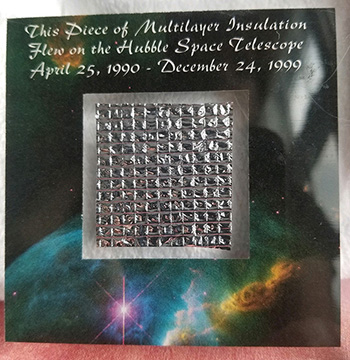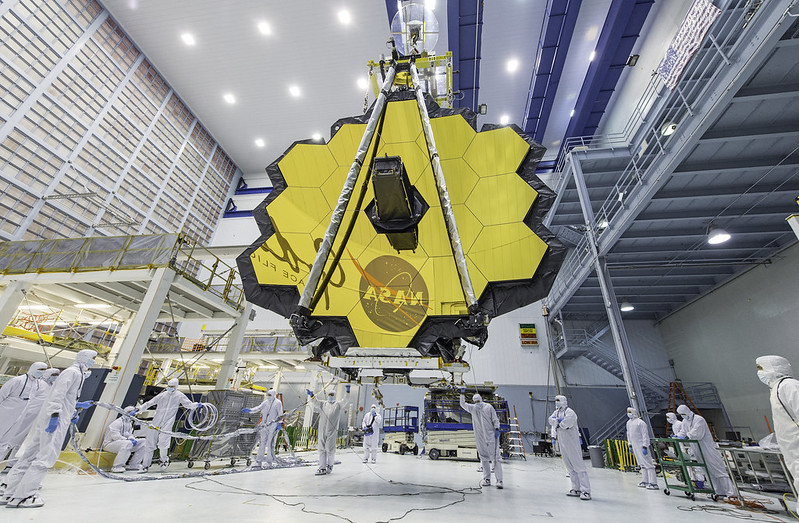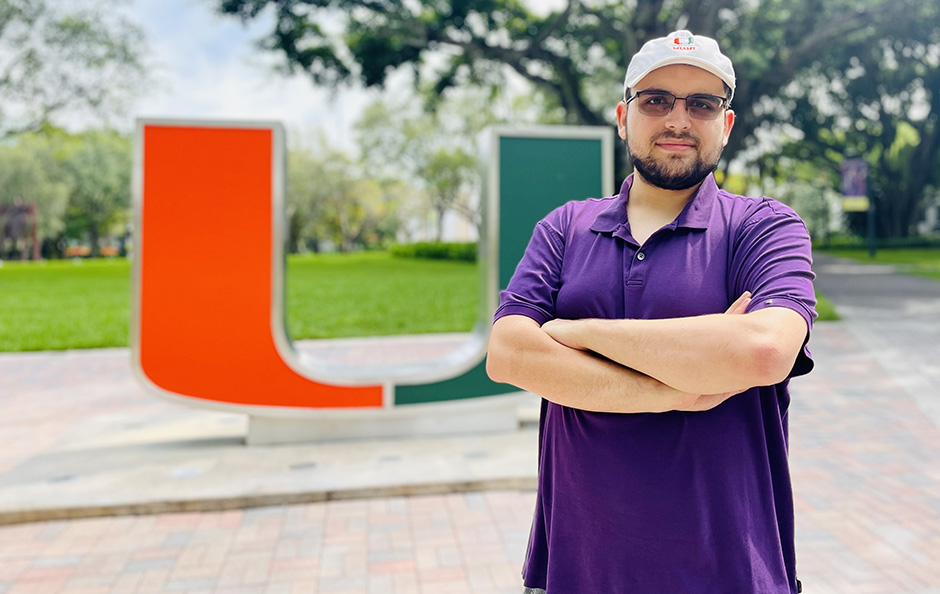The mysteries of space have constantly piqued Joseph Sterling’s interest. His family bought him a telescope when he was in high school, and a family friend gave Sterling a piece of foil shielding from the Hubble Space Telescope that is encased and preserved in an acrylic block. When the Great American Eclipse made its way across the United States in 2017, a block party was held in Sterling’s neighborhood in Richmond, VA.
“The Hubble piece is at home in Richmond and I’ve had it since I was a kid,” said Sterling, who is earning his Ph.D. in physics at the University of Miami. “The piece is displayed in my room, and to put it quite simply, I just find space really, really cool.”
 Growing up in Richmond with parents who are medical doctors, Sterling says his parents fostered an environment of learning, “but it also turned me off from the medical profession,” he said. “I was always a STEM-inclined kid. I was actually quite good at chemistry, but I couldn’t get a grasp on the sheer increase in difficulty while taking AP chemistry as well as the intense memorization. When I started taking physics classes in high school, that’s what truly sparked my interest.”
Growing up in Richmond with parents who are medical doctors, Sterling says his parents fostered an environment of learning, “but it also turned me off from the medical profession,” he said. “I was always a STEM-inclined kid. I was actually quite good at chemistry, but I couldn’t get a grasp on the sheer increase in difficulty while taking AP chemistry as well as the intense memorization. When I started taking physics classes in high school, that’s what truly sparked my interest.”
Before attending the University of Miami, Sterling earned a B.S. in physics with honors and a minor in mathematics. For Sterling, UM seemed like a good fit because he has extended family in South Florida area and was looking forward to the research opportunities at UM.
Currently on his way to becoming an astrophysicist, Sterling is now embarking on a big project with help from Nico Cappelluti, an assistant professor of astrophysics in the College of Arts & Sciences, and researchers from Harvard University and Yale University. Using archived data from the James Webb Space Telescope (JWST), Sterling and his team will embark on a quest in search of supermassive black holes.
Found in the center of large galaxies, supermassive black holes are millions (even billions) of times as massive as the sun—and understanding how they formed in the Universe is the foundation of Cappelluti’s research.
“We are thrilled to begin using the amazing new data from JWST and the Chandra X-ray Observatory Telescope,” said Cappelluti. “It will be a lot of work and dedication, but we have already started analyzing some of the archived data.”
Obtaining data from the JWST is free to the public, but to secure funding that would help the team analyze the data using different programming tools costs money, so in order to secure funds that would allow the team to gather and analyze the data for the next two years, Sterling submitted a detailed proposal to the folks working with the JWST, and they were selected.

“The competition for obtaining JWST funding is fierce, about one in seven proposals is approved,” added Cappelluti. “Thanks to Joseph’s dedication, and the competences developed in the last few years by my research group, we are now able to compete in these ‘Olympics of Astrophysics,’ as I like to call it. We hope to be able to present some of our results at a workshop that we are organizing here in Miami in December.”
The proposal is titled, “Pinpointing early supermassive black holes and star formation with JWST and Chandra.”
Galaxies with super massive black holes give out very particular types of X-ray emissions that are detectable. Sterling hopes to find these locations in areas of space that go further back in time to the formation and evolution of galaxies by examining data captured by the JWST, which detects infrared light in space, and the Chandra telescope.
The Chandra X-ray Observatory launched aboard the Space Shuttle Columbia in 1999 and detects X-ray emissions from extremely hot regions of the Universe. Infrared light is used to find distant objects in space, and that’s what the JWST allows astrophysicists to see, particularly the first billion years after the Big Bang when the Universe formed the first stars, galaxies, and super massive black holes.
“The problem we are finding is that because of the properties of light, we are having difficulties detecting things that are very, very far away,” said Sterling. “The goal of the research is to find super massive black holes that are very far away with the data of infrared light seen with the James Webb Space Telescope.
“After we acquire the data,” he added, “we will use different programs to compare it with the Chandra data. By using a method called ‘stacking,’ we can decipher what areas in space a super massive black hole could be and what is just background noise, which is the stuff that gets in the way of what we are trying to find, such as dust clouds, errors in the telescope, other smaller galaxies, etc.”
Once Sterling, Cappelluti, and the investigators from Harvard and Yale begin to analyze the data collected from both telescopes, they will present peer-reviewed research and studies on their findings.
“I’m really excited to get started on this project,” said Sterling. “It was a very competitive proposal and I’m glad we were one of the teams chosen to conduct this study using the James Webb Space Telescope.”

